NEW YORK TIMES CITY ARCHIVE
OVERVIEW
NYT City ARchive is an AR experience that allows users to travel in time and explore New York Time’s Time Machine & Archive of articles since the 1850s, distributed in their spatial context.
The idea is built on the notion that news archives are historical stories that can be linked to places in a city. By navigating this archive in a spatial context and as a spatial layer on top of the world, users will be able to build a better and more informative understanding of the spaces they occupy and the cities they walk in through connecting spaces, places and their stories.
Context
An extension of the NYTs Spatial Computing Challenge, 2020
People
Karen El Asmar (Team)
Tools
Sketch, Protopie
Tag
SOLUTION HIGHLIGHTS
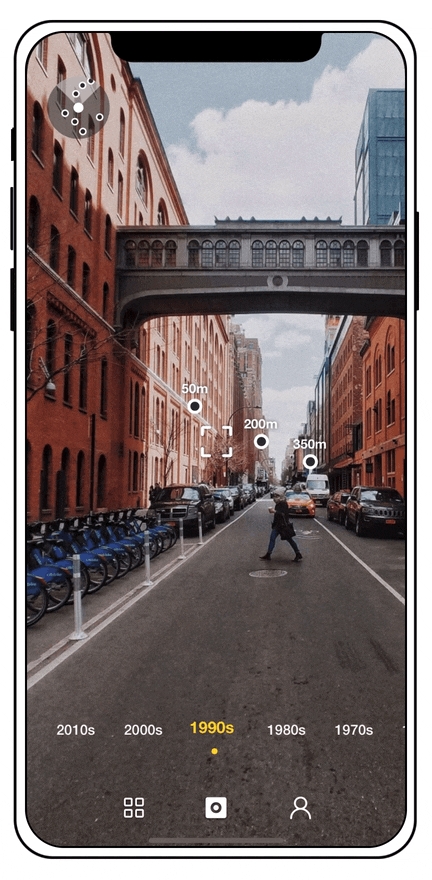
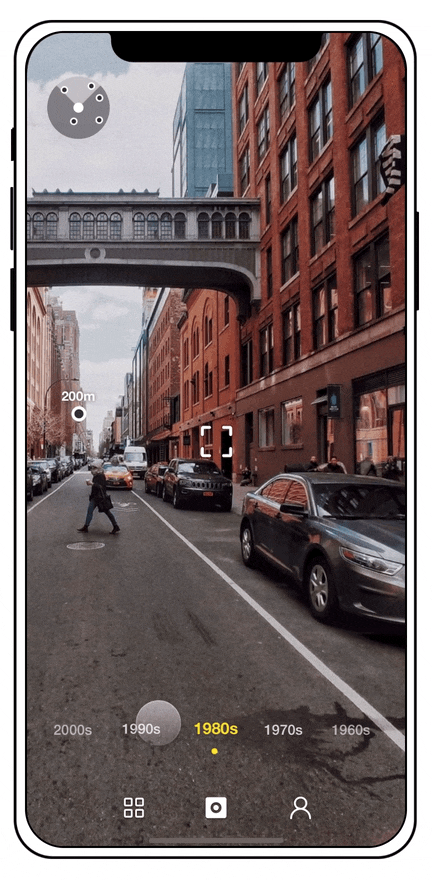
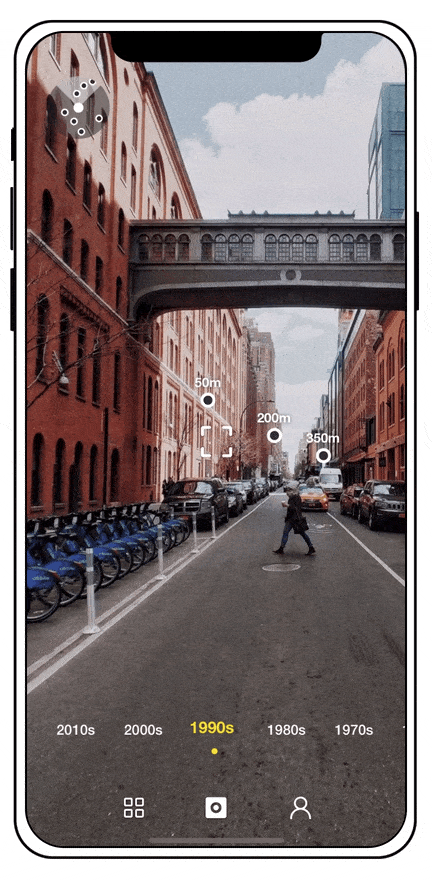
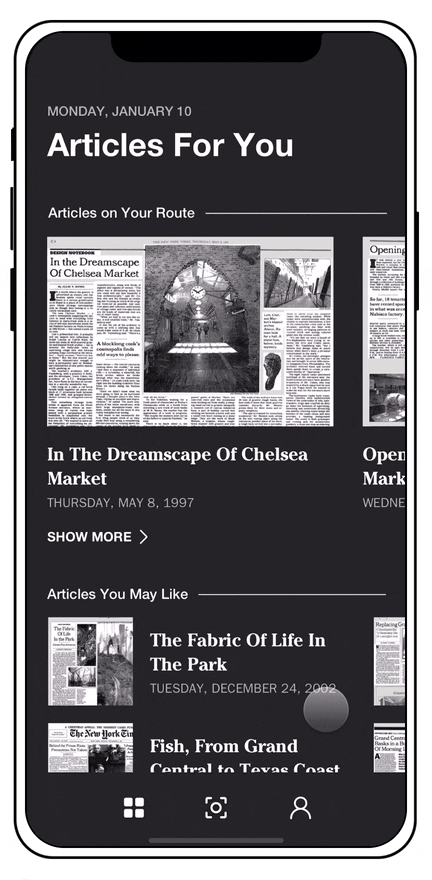
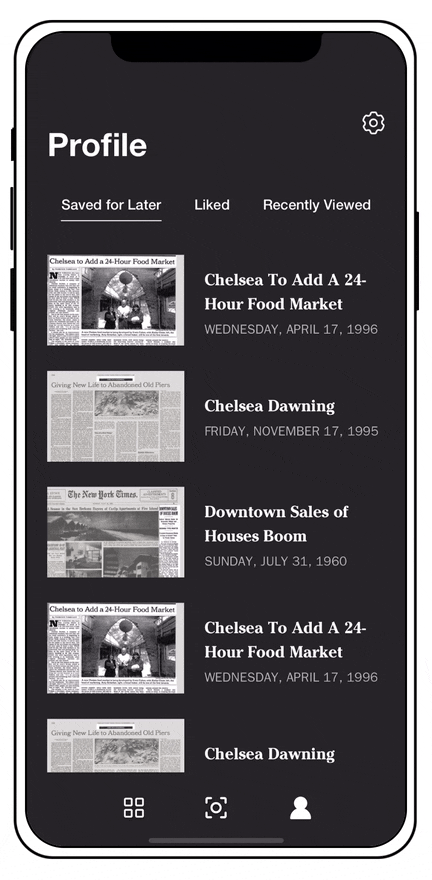
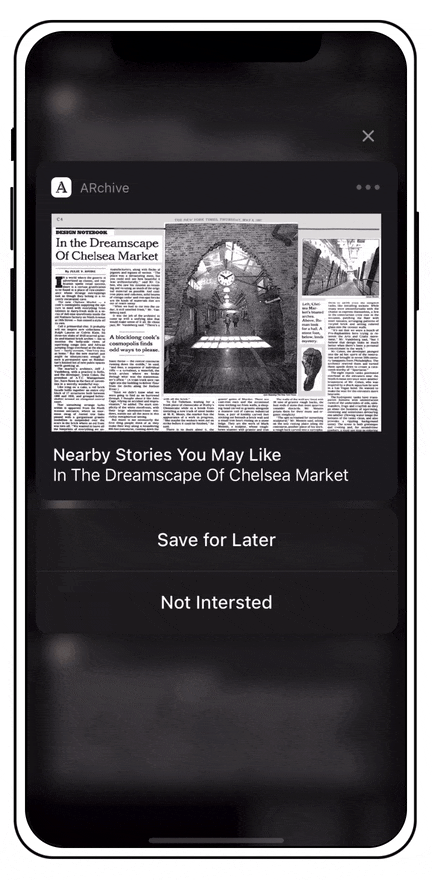
How DID I Get There?1. RESEARCH
How might we reimagine New York Times as a contextual layer on top of the world, via phone-based AR or AR glasses?
First, we analyzed NYTs Mission & Approaches —
Our goal was to understand what it really means to become a contextual layer on top of the world.
▸ Is NYTs already doing so? How are they currently approaching this?
▸ How is it changing the way users understand and interact with their context?
▸ Where, when and how are they intervening in a user's every day life?
▸ What are some benefits for the user to have NYTs as a "contextual layer" on top of the world?
Then, we looked into NYTs current AR/VR Experiences —
Most of those experiences focus on turning news into 3D stories than can easily be experienced from the comfort of a user's home, as suggested in NYTs article Augmented Reality: How We'll Bring the News Into your Home.
Meanwhile, we conducted some qualitative user research —
... to better understand how users currently interact with, receive and search for news and how, when and where do they do so. From these conversations, we were able to identify 5 different types of users and key insights about their experiences.
Key Insights
▸ DEVICE: Users receive and interact with news mostly on their mobile phones.
▸ NOTIFICATIONS & BRIEFINGS: Some users rely on morning briefings on smart home devices, while others read headlines and notifications for general fast updates.
▸ COMMUTE: Many users listen to the Daily Podcast on their commutes.
▸ KEYWORD SEARCHING: Users typically search the app for keywords on specific topics of interest.
▸ AR/VR CONTENT: Few have actually explored any AR/VR content on the NYTs app. Those who have were mostly excited about the technology and to see how it works.
▸ CONTEXT: Users remain disconnected from surroundings while experiencing news.
2. SYNTHESIS
OPPORTUNITY IDENTIFYING
After synthesizing our initial research and during our brainstorming sessions, we noticed a gap in the way we receive news using XR technologies related to out-of-home experiences.
BRAINSTORMING
In the brainstorming process, we came up with a series of questions that triggered different ideas and concepts.
How can we expand the dimensions of news using XR technologies into spaces beyond our homes?
PRIMARY CONCEPT
We envision a future where New York Times articles not only becomes an omnipresent layer of journalistic material on top of the world, but also, through news, contextualizes users in their environments and deepens citizen engagement and users’ connection to their city surroundings.

3. CONCEPT DEVELOPMENT
To evaluate and validate our idea, we conducted a second round of research, including two steps — (1) look for supportive NYT resources, and (2) Evaluate the proposed concept through user research and attitude study.
RESOURCE RESEARCH — NYT Time Machine & Archive
While studying the New York Times products, we came across NYT Time Machine and Archive pages - which are very navigable archives that consist of stories covered by NYTs since the 1850s till present. By simply searching keyword(s), these archives show all results of related articles, which can additionally be filtered by date or certain period of time.
CONCEPT EVALUATION - User Research & Attitude Study
For our second user test, we asked users about the type of news they typically search for or like to learn more about on their commutes in the city and if they currently have a method of receiving or searching for this information. We also asked them to share with us something they recently learnt or discovered on their commutes in the city and if and how they interacted with this information.
Quotes From Target Users
"When I first arrive to New York, I mostly relied on Google and Google Maps to search and learn more interesting places nearby."
"There’s always something new to discover wherever you look in New York. I constantly stop by plaques and signs on buildings and in parks and read them."
"Plaques and signs give you a whole new perspective of what was actually going on in this place in a certain era. Would love to be able to keep track of those stories and connect them..."
"I am always curious to know what shaped a certain district, what it the way it is today, what stories happened here, I recently saw a documentary about a restaurant owner called Florent: Queen of the Meatpacking District... it changed completely the way I view the area."
User Journey Map
FINALIZED GUIDING QUESTION
How might we provide new and engaging ways for users to receive and interact with the valuable historical, hidden and possibly forgotten urban stories?
FINAL CONCEPT
After our second round of research, we modified of our guiding questions to:
A platform that leverages the NYT archives to build a large-scale geotagged AR experience in the city. This experience approaches space as a medium and interface for news that allows users to search and scroll through time for articles of interest in different locations across the city.
Such an experience allows NYT to “digitize & hybridize” traditional newspaper articles in a new form using AR technologies, to keep this content alive and turn it into a way to drive and deepen citizen engagement and user’s connection to their cities.
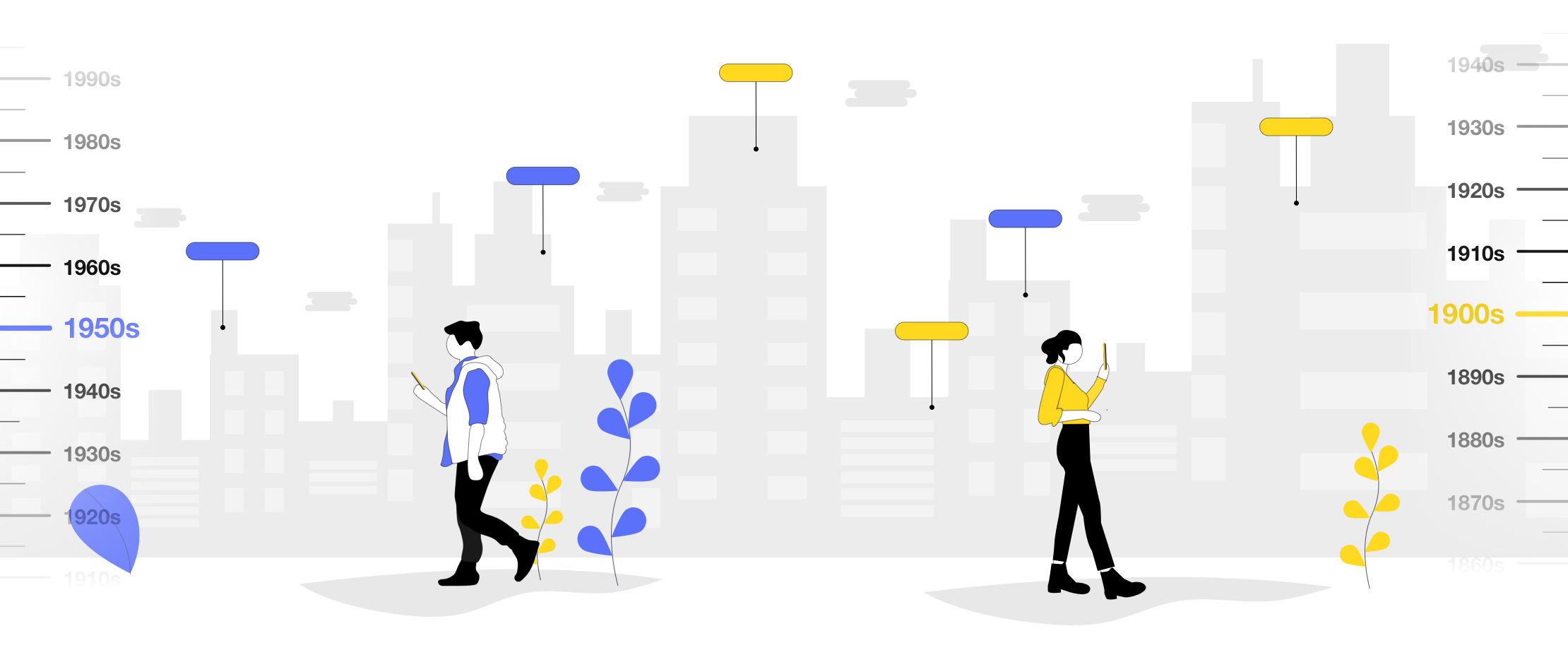
3. DESIGN
INFORMATION ARCHITECTURE
FLOW CHART
WIREFRAMES
PROTOTYPES
4. MVP FEATURES

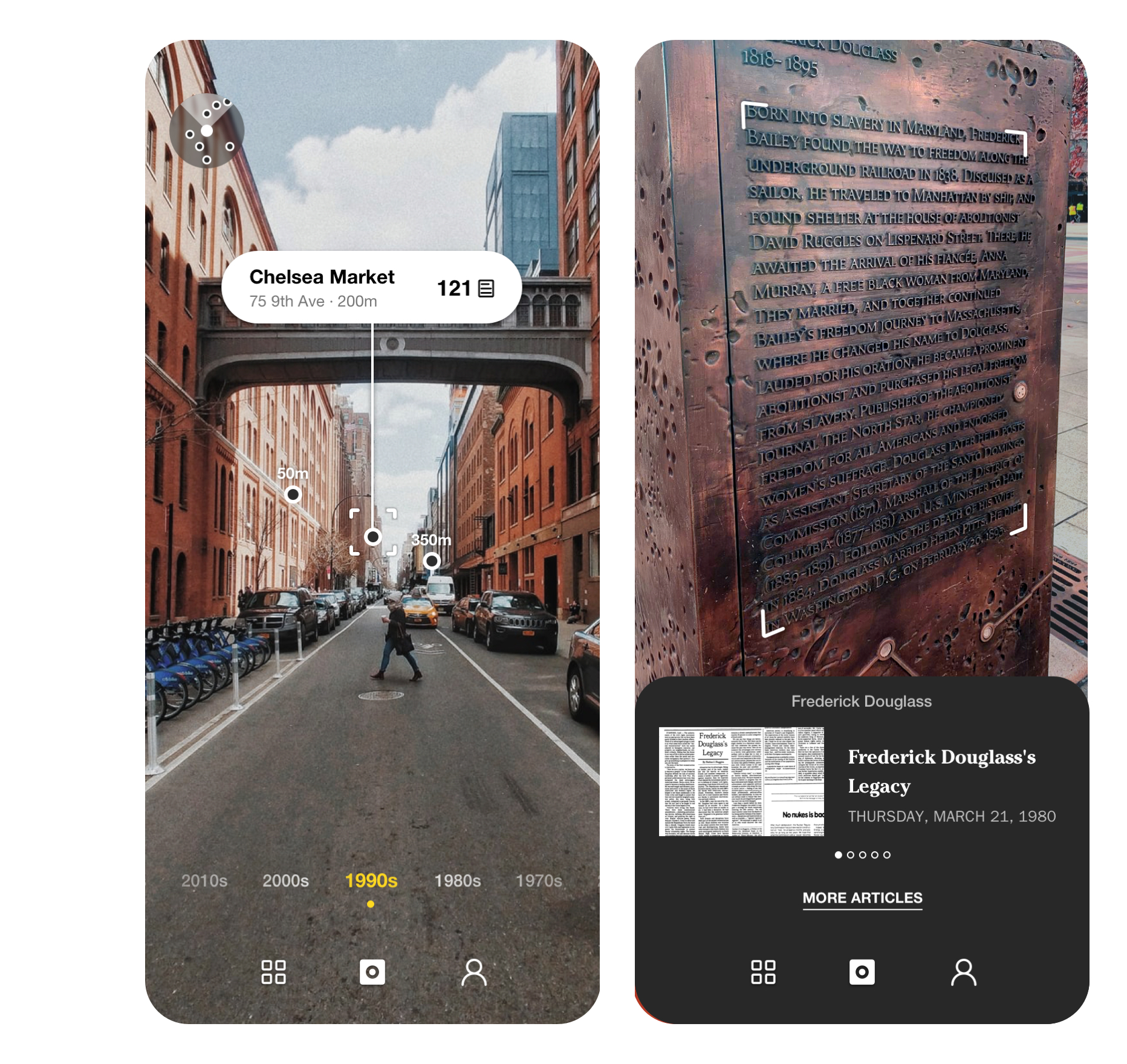
#1 AR SCAN for ARTICLES IN AN AREA
By AR Scanning their surroundings, users can discover spots introduced/mentioned by NYT articles and locate NYT articles in their spatial contexts. When users are close to certain plaques, they can also scan those plaques for AR experiences of some stories.

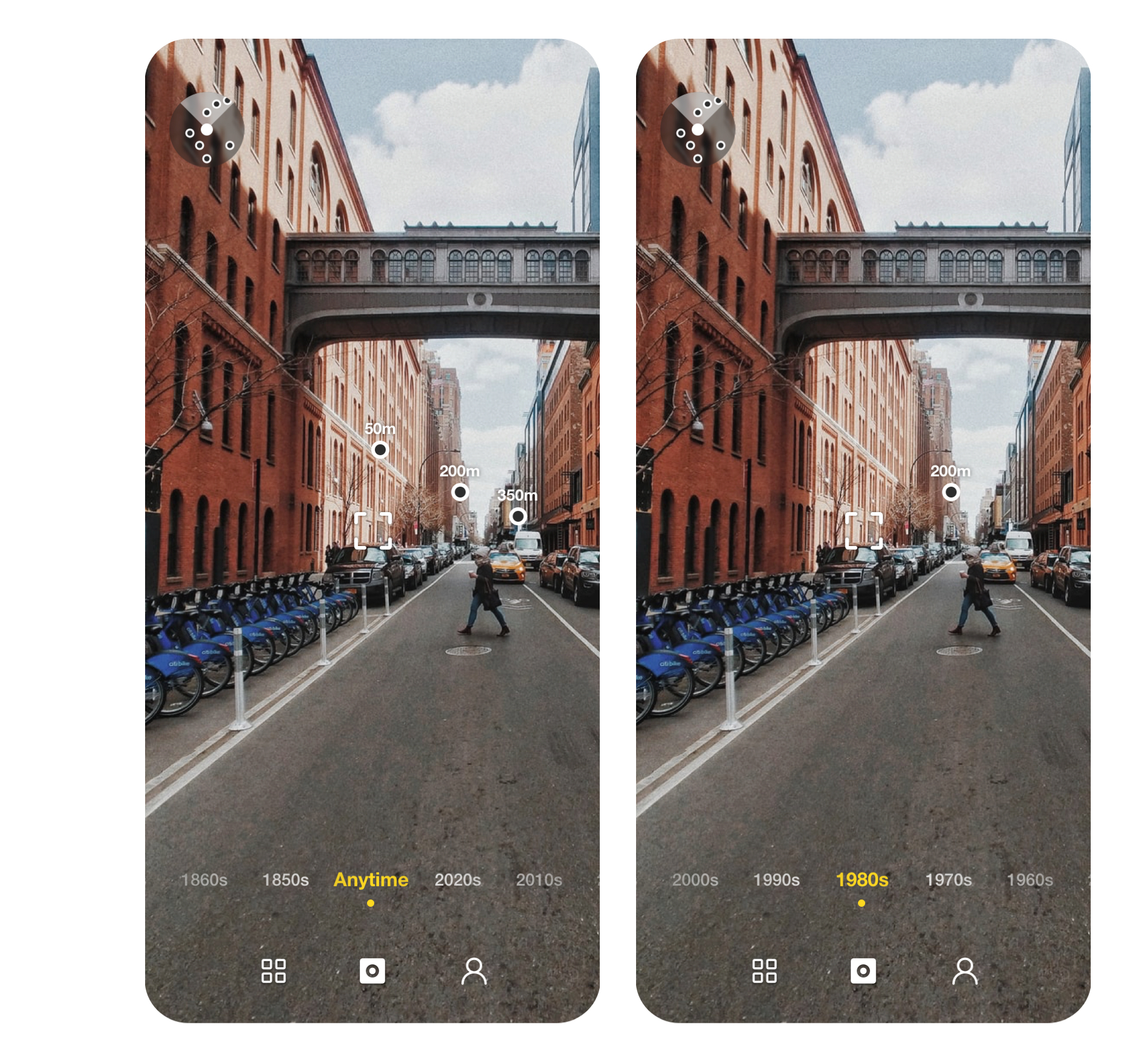
#2 Spatial Time Machine Slider
By scrolling through the Time Machine slider, users can filter spots that contain NYT articles in the selected period. They can better understand the area in different time contexts and see how it developed throughout history.
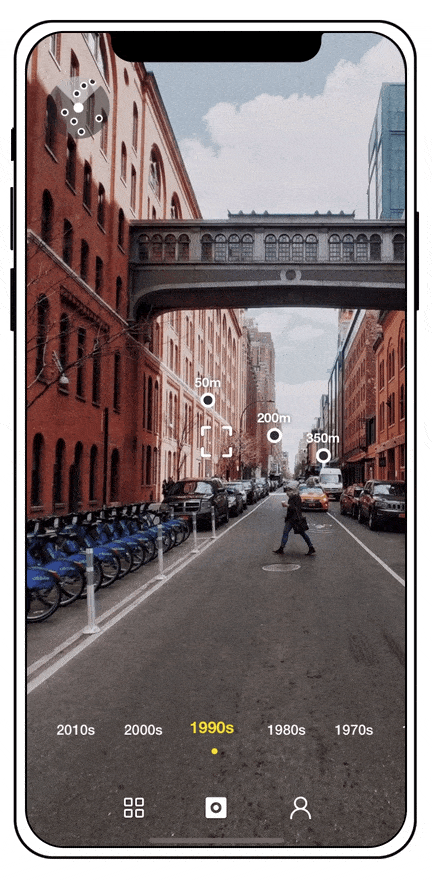
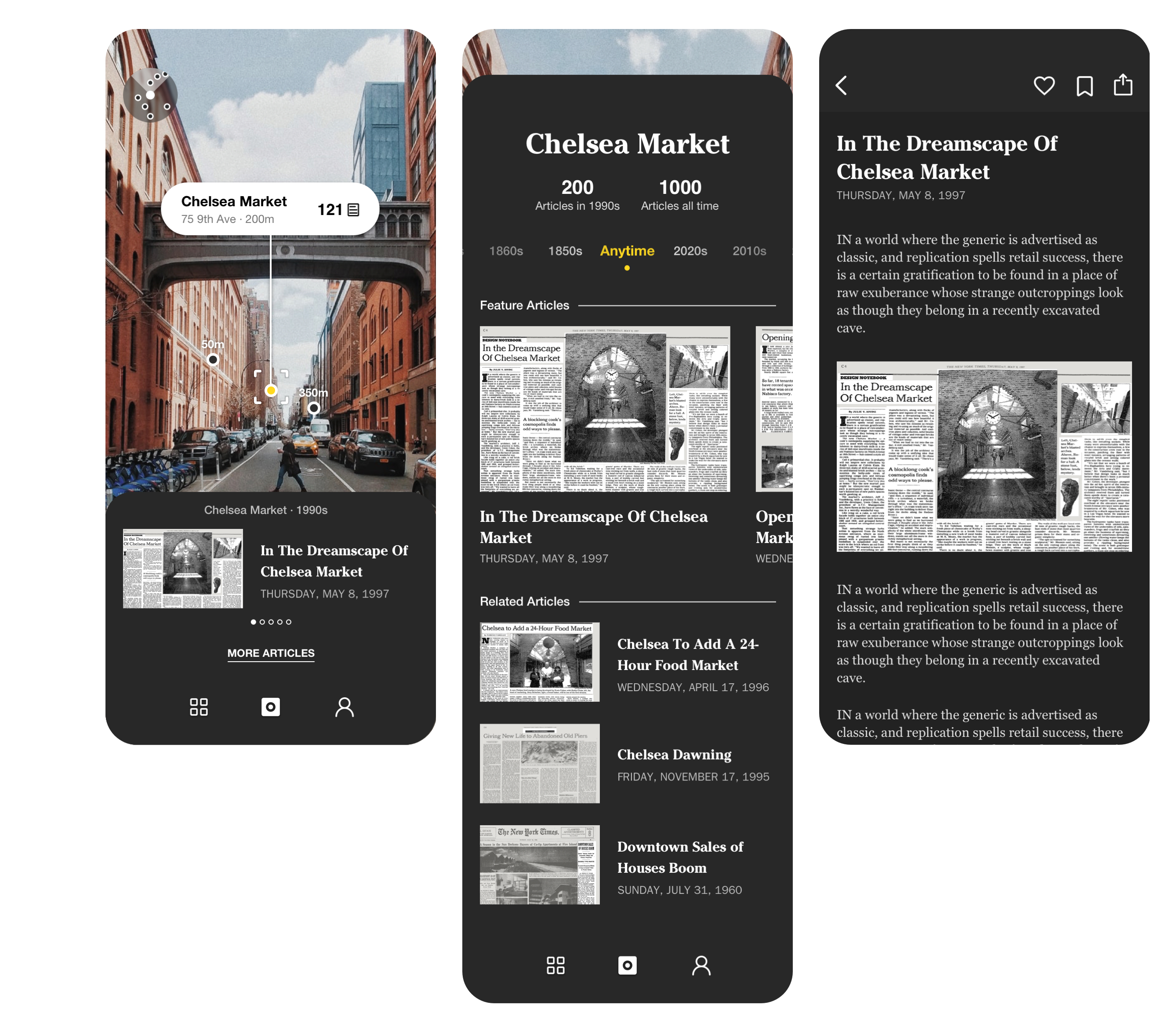
#3 NYT Articles of the spot
Once focused on an annotation mark in the AR space, users can learn basic location information and the number of articles available there in the selected period through annotation.
By tapping on the annotation and scrolling through the featured articles, users gain a brief overview of the spot before diving into the full article list, where they can access more articles and choose whichever articles they like to read or save for later.

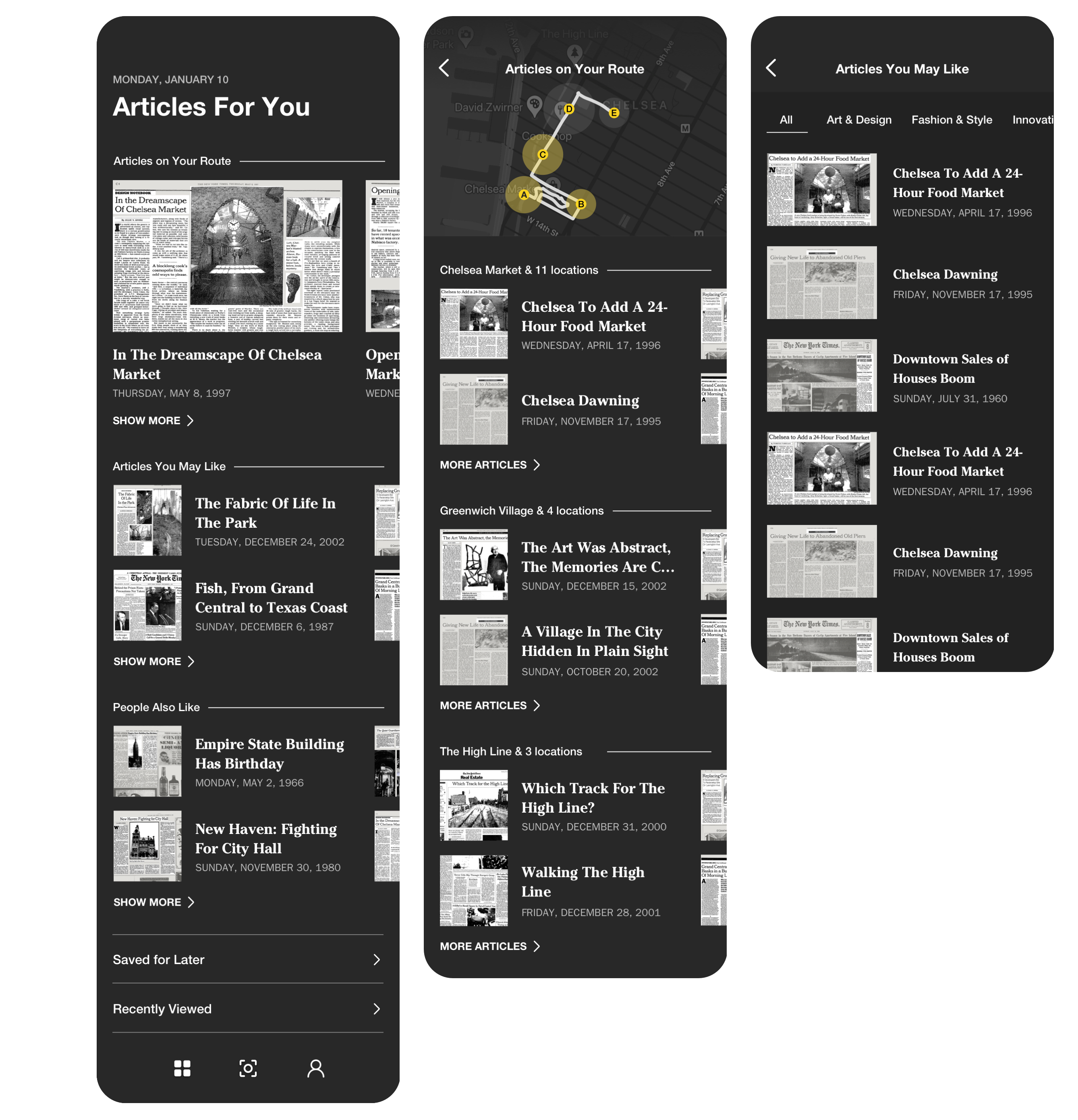
#4 ARTICLE RECOMMENDATIONS & EXPERIENCE FOR COMMUTERS
Articles You May Like & People Also Like: Through recommended articles, users can learn more city stories through news archives as inspirations for their next city trips.
Articles on Your Route: Users like bikers and drivers, who can not use the AR scan feature on their commute, can get a recap of articles on their route after their trip, which are grouped based on locations.

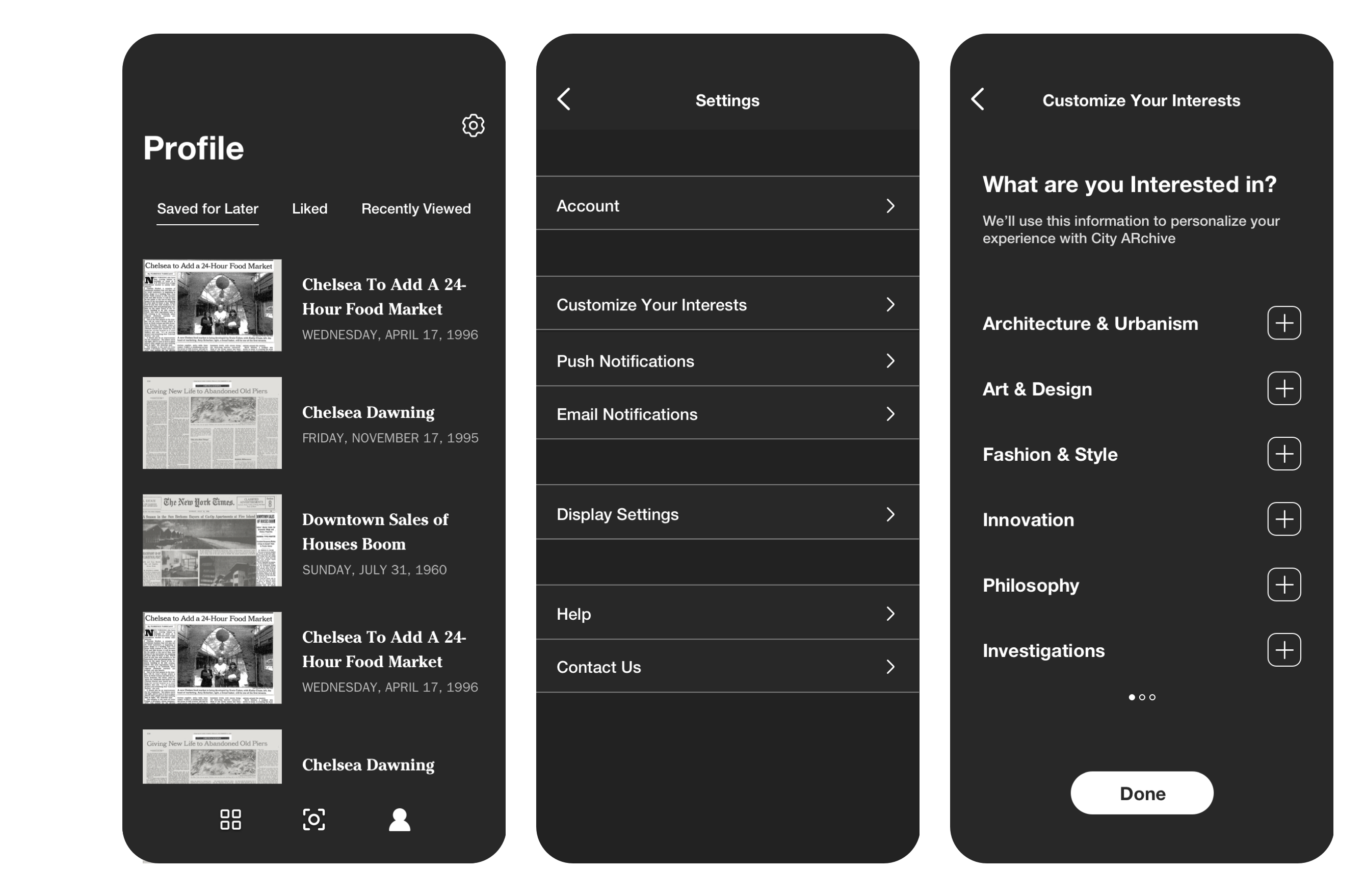
#5 Reading Interest Customization
In settings, users can customize their reading interests, which optimize article recommendations.

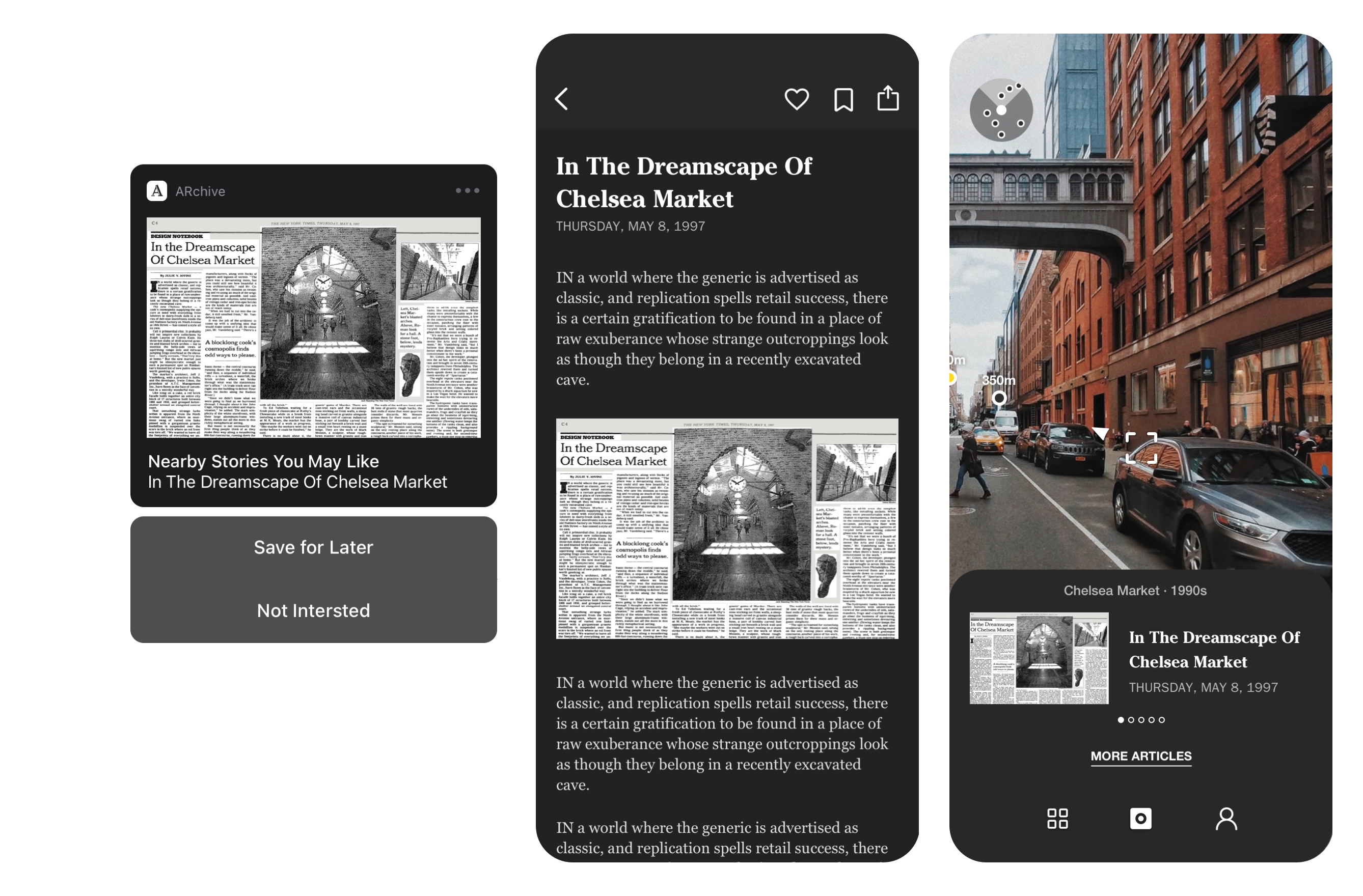
#6 Notifications of nearby stories
Users get notified when there are articles they may be interested in around them. They can locate the read article in the AR scene through a navigation mark.













